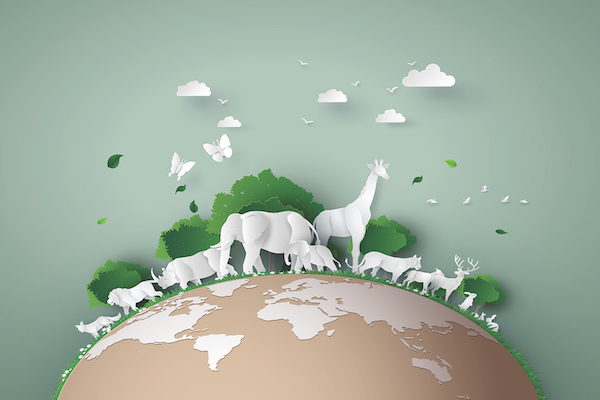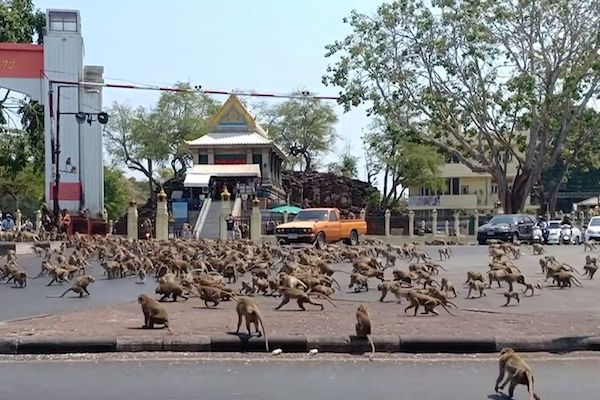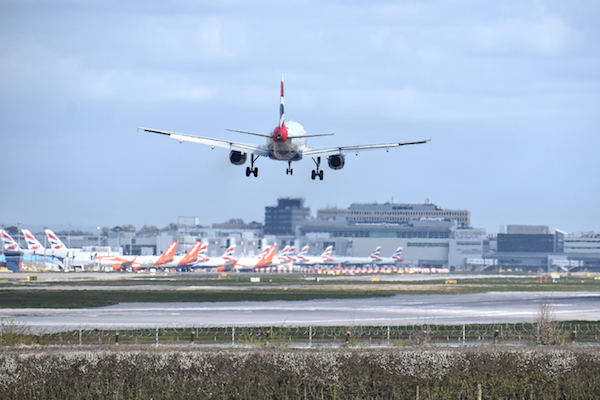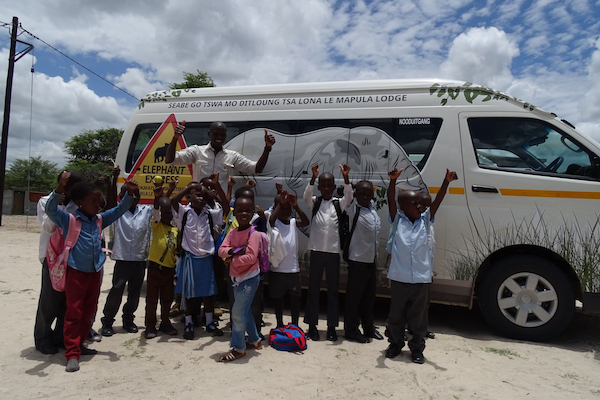
With virtually zero movement of cars, planes and boats, a massive decrease in factories belching
out toxic fumes, the absence of human litter, river dredging and human interaction with the oceans, we are seeing a massive resurgence in wildlife, sea-life and the quality of the air we breathe.
Take a look out of your window - no plane contrails in the sky, no ships on the sea, no one on the beach - it is a little like a dystopian horror movie where the human population has all been wiped out and nature is back in control.
Within weeks, China’s use of coal dropped by 40% by their six largest power stations and the country’s air quality rose by 11.4%. Satellite images show that the nitrogen dioxide (NO2) emissions rapidly fading away across Italy and Spain.
The first thing to consider, says Kimberly Nicholas, a sustainability science researcher at Lund University in Sweden, is the different reason that emissions have dropped. Take transport, for example, which makes up 23% of global carbon emissions. These emissions have fallen in the short term in countries where public health measures, such as keeping people in their homes, have cut unnecessary travel. Driving and aviation are key contributors to emissions from transport, contributing 72% and 11% of the transport sector’s greenhouse gas emissions respectively.
As more countries order their human populations to stay at home to limit the spread of coronavirus, wild animals have been spotted exploring the empty streets of some of the world's largest urban areas.
Film footage of a civet cat roaming the deserted streets of Kozhikode in the Indian State of Kerala went viral on social media, while a puma turned up in the centre of the Chilean capital Santiago, a city which is under curfew. "This is the habitat they once had and that we've taken away from them," said Marcelo Giagnoni, the head of Chile's agricultural and livestock service.
In the Calanques National Park near France's second city of Marseille, wildlife "is reclaiming its natural habitat with surprising speed", according to the park authority's president, Didier Reault. With walkers, bathing and boating banned, the puffins who used to stay on the small islands in the most protected areas are now extend- ing their range, he adds.
In Europe, wild boar have descended from the hills around the Catalan city of Barcelona, while ducks were seen walking near the Comédie Française theatre in central Paris. In the Mediterranean, dolphins have reappeared in several ports. Emboldened wildlife has returned to wander our cities and towns, according to Romain Julliard, head of research at the French Natural History Museum.
In Nara Park, a popular Japanese attraction, more than a thousand deer can roam freely throughout the year with tourists often lining up to feed them.
People who live in the city of Venice have reported seeing fish and ducks in the canals after coronavirus lockdown left the streets and famous canals empty.
In one of the more unusual incidents being attributed to the new coronavirus outbreak, a turf war between dozens of street monkeys and temple monkeys broke out in Thailand's historic city of Lopburi. According to city residents, the furry fracas likely resulted from a sharp dip in tourism to the 800-year-old city — and thus a dip in free food offerings to thousands of local monkeys.

So far so good but there is a dark side to all this. It is the very destruction of the natural habitat that has given rise to the coronavirus. Take the generally accepted case of the current outbreak, that of the ‘wet’ animal markets in China. So called ‘wet’ markets are such as you can purchase your dog, cat, bat or any other form of wildlife and they will kill it for you on the spot - with the same knives that they have been using all day to slaughter a parade of different creatures. If we accept that the virus came from infected bats, it is easy to see how this crisis started with an array of bats on sale for immediate slaughter for that tasty lunchtime snack.
Even though China recently banned open air markets that trade wildlife (yeah, right), the government has issued guidelines for treating COVID-19 that include medicines containing bear bile, according to National Geographic. This will now lead to the mass slaughter of the bear population and who knows what little pathogens those guys are carrying.
This is nature's way of saying ‘stop eating the bloody wildlife’. But of course humans are the dumbest of all animals and will not listen even after the horror show we are currently attempting to survive.
Only a decade or two ago it was widely thought that tropical forests and intact natural environments teeming with exotic wildlife threatened humans by harbouring the viruses and pathogens that lead to new diseases in humans such as Ebola, HIV and dengue. But a number of researchers today think that it is actually humanity’s destruction of biodiversity that creates the conditions for new viruses and diseases such as Covid-19, the viral disease that emerged in China in December 2019, to arise – with profound health and economic impacts in rich and poor countries alike.
In fact, a new discipline, planetary health, is emerging that focuses on the increasingly visible connections between the wellbeing of humans, other living things and entire ecosystems. Is it possible, then, that it was human activity, such as road building, mining, hunting and logging, that triggered the Ebola epidemics in Mayibout 2 and elsewhere in the 1990s and that is unleashing new terrors today?
“We invade tropical forests and other wild landscapes, which harbour so many species of animals and plants – and within those creatures, so many unknown viruses,” David Quammen, author of Spillover: Animal Infections and the Next Pandemic, recently wrote in the New York Times. “We cut the trees; we kill the animals or cage them and send them to markets. We disrupt ecosystems, and we shake viruses loose from their natural hosts. When that happens, they need a new host. Often, we are it.”
Some, like rabies and plague, crossed from animals centuries ago. Others, such as Marburg, which is thought to be transmitted by bats, are still rare. A few, like Covid-19, which emerged last year in Wuhan, China, and Mers, which is linked to camels in the Middle East, are new to humans and spreading globally.
Other diseases that have crossed into humans include Lassa fever, which was first identified in 1969 in Nigeria; Nipah from Malaysia; and Sars from China, which killed more than 700 people and travelled to 30 countries in 2002. Some, like Zika and West Nile virus, which emerged in Africa, have mutated and become established on other continents.
Kate Jones, chair of ecology and biodiversity at UCL, calls emerging animal-borne infectious diseases an “increasing and a very significant threat to global health, security and economies”.
In 2008, Jones and a team of researchers identified 335 diseases that emerged between 1960 and 2004, at least 60% of which came from animals. Increasingly, says Jones, these zoonotic diseases are linked to environmental change and human behaviour. The disruption of pristine forests driven by logging, mining, road building through remote places, rapid urbanisation and population growth is bringing people into closer contact with animal species they may never have been near before, she says.
The resulting transmission of disease from wildlife to humans, she says, is now “a hidden cost of human economic development. There are just so many more of us, in every environment. We are going into largely undisturbed places and being exposed more and more. We are creating habitats where viruses are transmitted more easily, and then we are surprised that we have new ones.”
Jones studies how changes in land use contribute to the risk. “We are researching how species in degraded habitats are likely to carry more viruses which can infect humans,” she says. “Simpler systems get an amplification effect. Destroy landscapes, and the species you are left with are the ones humans get the diseases from. There are countless pathogens out there continuing to evolve which at some point could pose a threat to humans,” says Eric Fevre, chair of veterinary infectious diseases at the University of Liverpool’s Institute of Infection and Global Health.
“The risk of pathogens jumping from animals to humans has always been there. The difference between now and a few decades ago, is that diseases are likely to spring up in both urban and natural environments. “We have created densely packed populations where alongside us are bats and rodents and birds, pets and other living things. That creates intense interaction and opportunities for things to move from species to species,”
Covid 19 presents humans with a unique opportunity to roll back on our ‘so-called’ progress, respect our environment, respect the horrific danger it presents and see this unique time to re-balance the planet.
The “wild” must be kept “wild.” It is time to restore our forests, stop deforestation, invest in the management of protected areas, and propel markets for deforestation-free products. Where the legal wildlife trade chain exists, we need to do a far better job of improving hygiene conditions. And of course, there is the urgent need to tackle the illegal wildlife trade, the fourth most common crime committed worldwide.
The better we manage nature, the better we manage human health. This is why the post-2020 biodiversity framework that countries around the world are expected to agree on this year matters greatly. An important pillar in our post-COVID recovery plan must be to arrive at an ambitious, measurable and inclusive framework, because keeping nature rich, diverse and flourishing is part and parcel of our life’s support system. Even more important when you consider that between 25-50% of pharmaceutical products are derived from genetic resources.
And as the engines of growth begin to rev up again, we need to see how prudent management of nature can be part of this “different economy” that must emerge, one where finance and actions fuel green jobs, green growth and a different way of life, because the health of people and the health of the planet are one and the same, and both can thrive in equal measure.”
Alas, this is unlikely to be the case. Humans are selfish creatures who feel the wild exists for their fun and games, with an unlimited supply of everything. Take for example the catastrophic crash in the Tuna population over the past 20 years. As they became harder and harder to catch, the price simply rose thus encouraging more to be caught as the profits soared. Finally, as the Tuna population totally crashed and very few were ever being caught, instead of recognising this for the dire warning it was to stop fishing until they recovered, on the very rare occasion when a large Bluefin Tuna was actually caught, the top price in Japan went up to $2.3 million for ONE SINGLE FISH.
The result of the current outbreak will be a global economic crash that will take a generation to climb out from under and therefore, once we are set loose again, we will fight even harder for dominance, we will build build build in every area in our attempt to get back to where we were. And where were we - top of the food chain - eating, shooting and destroying everything in our path until our own ultimate demise.
And now we hear that a tiger in the Bronx Zoo in New York has tested positive for the coronavirus. Thought to have been passed on by a keeper who was asymptomatic stated the zoo’s Chief Vet, Paul Calle: “This is the first time anywhere in the world we have seen a person infect an animal”. Another pet cat was diagnosed last week and there are now a further seven sick animals at the zoo.
This is not only worrying over the thought that animals could pass it to humans but far more worrying is the fact that humans can pass it to animals. They could be catching a very rare disease from the very animals that gave it to us. We’ve become the host - the superspreader. What a wonderful circle of life.
Instead of seeing the current pandemic as a warning to mend our ways and try to rebalance the planet, we will see it as a factory reset and when the starting gun fires, we will be off and running directly towards our own oblivion.
Note: With a publication remit to steer away from dire predictions of gloom and doom, please read the Doughnut Model article. Perhaps we can hope, learn fast and mend our ways...






